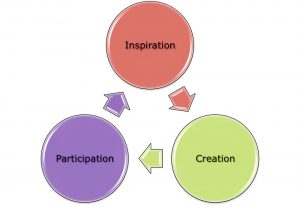Guest Blogger: Rob Bruijnzeels, independent advisor and founder of the Ministry of Imagination
Library buildings have long been designed based on paradigms from the 19th and 20th century with the typology of covered bookcases and the arrangement of an old-fashioned catalogue cabinet. But the world has changed and, because of ICT, information and knowledge are omnipresent and abundant. As a consequence, this changed the function of the collection and how you accommodate it. Unfortunately, new library buildings are unable to cope with this and often end up with a modern shaping of the outdated process of collecting, disclosing and making available. Therefore, they are becoming an interchangeable and eager to please ‘third place’, where the connection between the provided activities and the collection has become unclear.
Instead, one should look for a new function for the collection and its user. Library architecture from now on should be based on a process that focuses on the interaction between visitor and collection. In which the collection inspires the visitor and raises curiosity with surprising questions, presentations and arrangements. By organizing activities and programmes, visitors are invited to actively engage with the collection and enrich it with new insights and meanings. These new contexts become part of the collection by sharing them with others visitors. In this way, a new cyclic process of inspiration, creation and participation emerges that makes the library a collective facility that binds, captivates and activates people around the collection.
Librarians and architects have to start working with imagination on innovative forms of library architecture, to create space for this process and give the collection the place it deserves. Librarians will have to develop this changing function of collections and centralize it in their profession. Architects will have to learn to break with the classic iconic representation of the library building. All this generates creative space for an innovative dialogue.

